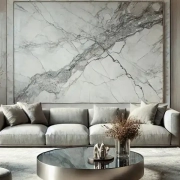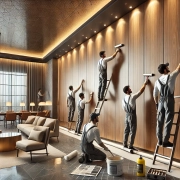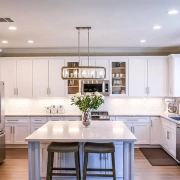How To Apply Pvc Edging To Plywood
Plywood can be quite beautiful but can be difficult to work with. If you’re looking to make a table or other wooden furniture you may want to consider using edge banding to protect the edges of your work. This can be a good way to cover and protect the edges of your plywood but it is much more labor intensive than applying edge banding to a sheet of plywood with an iron.
Edge banding is a material used to cover and protect the edges of wood
Plywood edge banding is a kind of edge trim that is used to protect the plywood from scratches and other damage. In addition, it also prevents the interior of the plywood from warping.
Edge bands can be applied to the edges of plywood, particleboard, and other wood types. They are available in different widths and thicknesses. It can be applied by hand or by using a machine. Choosing the right width depends on the design and type of wood that you are preparing to cover.
If you’re planning to cover the edges of your panels with plywood, it’s best to choose an edge band that will be durable and flexible. You can choose from various materials, such as melamine, polypropylene, or polyvinyl chloride.
The most common edge banding material is polyvinyl chloride. It’s inexpensive and easy to apply. However, it’s not as durable as other materials.
Acryliconitrile butadiene styrene (ABS) is another popular choice. It’s resistant to moisture and chemicals. This edge band is thermally resilient and can be colored to match the wood surface.
Polypropylene edge bands are very durable. They’re great for projects that are prone to moisture. Although they’re inexpensive, they’re not very strong, so you don’t want to use them for outdoor furniture.
There are also commercial edge bands that are thinner and more flexible. They can be used for curved or rounded edges. These are made with a hot-melt adhesive, which makes it more durable and flexible.
Edge banding can be glued on or stapled down. The glue can be polyvinyl acetate, PVA, or a branded glue. Generally, the glue dries clear and waterproof.
Another option is to apply edge banding with an iron. But be sure to apply it at the corners and not at the end of the board. Using an iron will make sure the edge banding sticks properly to the plywood.
To finish the edges of plywood, you can apply veneer. However, this can be a problem if you’re working with cheap plywood. Wood veneer doesn’t have the same high-quality look as solid wood.
It’s more time consuming than an iron-on edge banding
When you want to add a decorative finish to your woodwork, edge banding is one of the best solutions. It’s easy to install and comes in a wide variety of styles and materials.
Edge banding is usually applied with hot melt glue. However, it can be difficult to remove this type of adhesive. In some cases, a specialist solution may be required. If this happens, it can cause damage to your boards.
Another method is to use an iron on edge banding. This is a great way to finish a plywood edge. You can also use this method on low-heat-resistant materials. To apply, place a pre-heated iron on one end of the edge banding. Move the iron slowly to heat the adhesive. While it’s still hot, press the side edges of the banding back onto the substrate.
For a cheaper option, try a regular clothes iron. However, be sure to keep it level. Also, check to ensure that it’s not heating up the soleplate of the iron.
Another easy method for applying edge banding is by hand. However, this method can be time-consuming. Aside from the obvious time factor, you’ll need to prepare the substrate for the gluing. Before you start, you should protect the edge banding with a cotton cloth.
Alternatively, you can use painter’s tape to hold the glue in place. This method is especially important for longer, curved areas.
The best tape is PVC. Despite its durability, this material isn’t the most environmentally-friendly choice.
In fact, you may find that it’s more affordable to buy a cheap iron and make your own edge banding. You can buy an iron from a discount store or thrift shop. Just be sure to get an iron with a cotton setting.
You can also use a veneer saw or Heat Lock glue to attach different types of edge banding. Depending on the size of your project, you can cut the edge banding to the size you need. Alternatively, you can apply the edge banding with a machine.
Depending on the type of edge banding you’re using, you can also trim it to the desired length and thickness. But be sure to leave a half-inch border on either side.
Avoid rounding edges while applying
When applying plywood pvc edging, there are a few things you should do to make sure your end result is a successful one. One of the easiest ways to do this is to avoid rounding the edge. If you do this, you can create a much smoother finish. This is especially true if your project has curved edges.
In addition to making the end result smooth, you should also protect the inside layers of the plywood. For this, you’ll need to plan and flatten the boards.
To do this, you’ll need some sandpaper. You can buy sandpaper in a sanding block or a piece of sandpaper wrapped around a wood block. The sandpaper should be wrapped in a way that rubs downward at a slight angle.
You’ll also need some painter’s tape. This helps keep the glue in place. Some of these tapes are available in 250-foot rolls, which will be more than enough to cover the entire job.
Finally, you’ll need to apply some edge banding. These can be ironed or glued onto the edge of your plywood. They should be cut to the proper size. It’s important to leave at least half an inch of excess on each side.
The most efficient way to do this is to use pre-cut wood veneer or a strip of solid wood. These are easier to work with and make the edge look better. However, you should be careful not to burn your wood veneer if you apply it using an iron.
A few other tricks of the trade will help you achieve the best possible end result. One of these tricks is to use a sharp knife to trim the excess. Another is to sand the edges with a utility blade.
Lastly, it’s worth noting that you should never leave a hot iron in one spot for too long. Your hot iron could burn your wood and cause some of the adhesive to transfer to your clothes.
You might also consider a small puncture to fix a bubbled section of your edging.
Make your own edge banding
Edge banding can help you create a smooth surface on plywood. However, you need to apply the banding correctly to avoid peeling off. There are many methods of application. Some are simple, and others are more complex.
In the first method, you will need a hot iron, a piece of wood, and glue. You can also use a roller to press the edge banding into the plywood. This is the most effective way to apply wood veneer edge banding.
The second method is to press the edge banding with a piece of scrap wood. This will ensure that the glue gets into the wood. It is important to work on the entire flat surface, not just the edges.
Lastly, you can apply the edge banding with a sharp trimmer. However, it is more difficult to get the right shape. If you don’t have a good trimmer, you can simply cut the edge banding with a utility knife.
After you have cut your plywood to the size that you need, you can now begin the edge banding process. Start with the back side of the plywood, and run the edge banding over it. Be sure to overlap the edge banding slightly at the corners. Continue along the edge of the plywood until you reach the front side.
When you are finished with the edge banding process, you can use a sander to remove any remaining unevenness. This is especially important if your project is going to be viewed from the front.
Edge banding can be purchased in many materials. You can find a variety of colors and sizes. Make sure to choose the right thickness to match your plywood.
Edge banding can be applied to any edge on a piece of plywood. You can find pre-glued banding, which makes the process quick and easy. Alternatively, you can apply your own adhesive.
In addition to using the hot iron method, you can use double-sided tape to apply edge banding. However, you will need to fold the tape over so that the adhesive bonds.




















